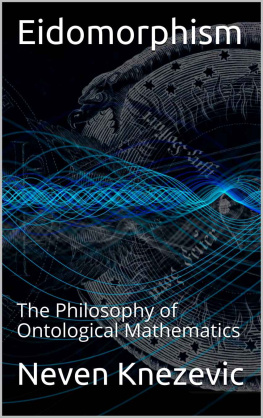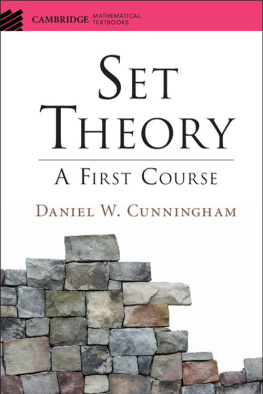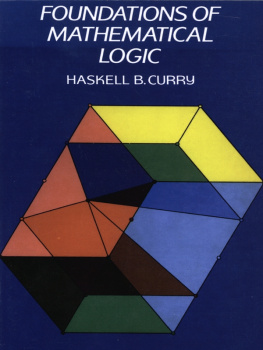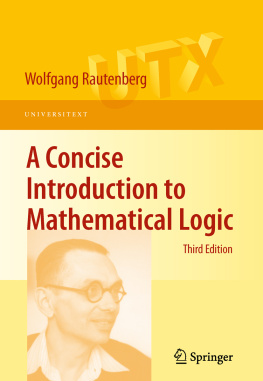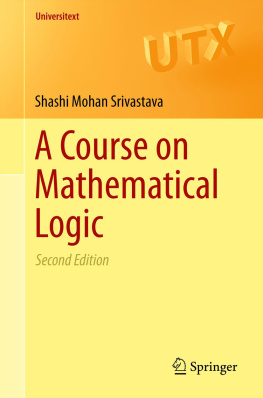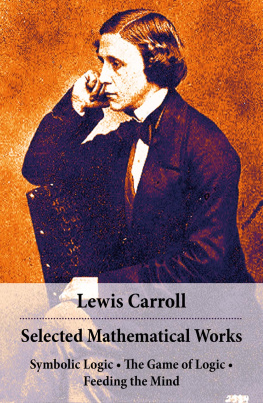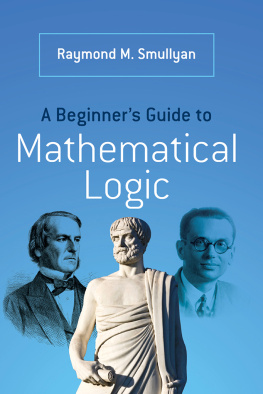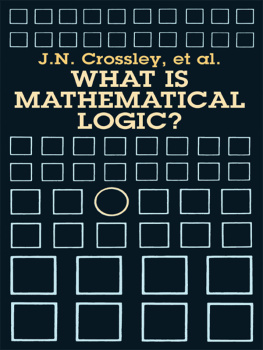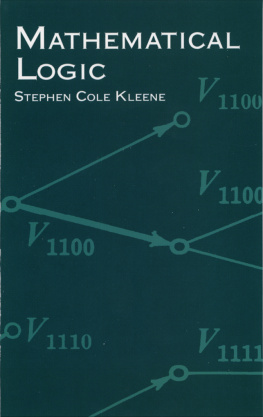The Search for Mathematical Roots, 18701940
The Search for Mathematical Roots, 18701940
LOGICS, SET THEORIES AND THE FOUNDATIONS OF MATHEMATICS FROM CANTOR THROUGH RUSSELL TO GDEL
I. GRATTAN-GUINNESS
PRINCETON UNIVERSITY PRESS
PRINCETON AND OXFORD
Copyright 2000 by Princeton University Press
Published by Princeton University Press, 41 William Street,
Princeton, New Jersey 08540
In the United Kingdom: Princeton University Press, 3 Market Place,
Woodstock, Oxfordshire, OX20 1SY
All Rights Reserved
Library of Congress Cataloging-in-Publication Data
Grattan-Guinness, I.
The search for mathematical roots, 18701940: logics, set theories and the foundations
of mathematics from Cantor through Russell to Gdel/I. Grattan-Guinness.
p. cm.
Includes bibliographical references and index.
ISBN 0-691-05857-1 (alk. paper)ISBN 0-691-05858-X (pbk.: alk. paper)
1. ArithmeticFoundationsHistory19th century. 2.
ArithmeticFoundationsHistory20th century. 3. Set theoryHistory19th century. 4.
Set theoryHistory20th century. 5. Logic, Symbolic and mathematicalHistory19th
century. 6. Logic, Symbolic and mathematicalHistory20th century. I. Title.
QA248 .G684 2000
510--dc21 00-036694
This book has been composed in Times Roman
The paper used in this publication meets the minimum requirements of
ANSI/NISO Z39.48-1992 (R1997) (Permanence of Paper)
www.pup.princeton.edu
Printed in the United States of America
10 9 8 7 6 5 4 3 2 1
CONTENTS
CHAPTER 1
Explanations
CHAPTER 2
Preludes: Algebraic Logic and Mathematical Analysis up to 1870
CHAPTER 3
Cantor: Mathematics as Mengenlehre
CHAPTER 4
Parallel Processes in Set Theory, Logics and Axiomatics, 1870s1900s
CHAPTER 5
Peano: the Formulary of Mathematics
CHAPTER 6
Russells Way In: From Certainty to Paradoxes, 18951903
CHAPTER 7
Russell and Whitehead Seek the Principia Mathematica, 19031913
CHAPTER 8
The Influence and Place of Logicism, 19101930
CHAPTER 9
Postludes: Mathematical Logic and Logicism in the 1930s
CHAPTER 10
The Fate of the Search
CHAPTER 11
Transcription of Manuscripts
The Search for Mathematical Roots, 18701940
CHAPTER 1
Explanations
1.1 SALLIES
Language is an instrument of Logic, but not an indispensable instrument.
Boole 1847a, 118
We know that mathematicians care no more for logic than logicians for mathematics. The two eyes of exact science are mathematics and logic; the mathematical sect puts out the logical eye, the logical sect puts out the mathematical eye; each believing that it sees better with one eye than with two.
De Morgan 1868a, 71
That which is provable, ought not to be believed in science without proof.
Dedekind 1888a, preface
If I compare arithmetic with a tree that unfolds upwards in a multitude of techniques and theorems whilst the root drives into the depths []
Frege 1893a, xiii
Arithmetic must be discovered in just the same sense in which Columbus discovered the West Indies, and we no more create numbers than he created the Indians.
Russell 1903a, 451
1.2 SCOPE AND LIMITS OF THE BOOK
) only in the late 1920s, but I shall use it throughout.
Various consequences followed, especially revised conceptions of logic and/or logicism from Russells followers Ludwig Wittgenstein and Frank Ramsey, and from his own revisions of the mid 1920s. Then many techniques and aims were adopted by the Vienna Circle of philosophers, affirmatively with Carnap but negatively from Kurt Gdel in that his incompletability theorem of 1931 showed that the assumptions of consistency and completeness intuitively made by Russell (and by most mathematicians and logicians of that time) could not be sustained in the form intended. No authoritative position, either within or outside logicism, emerged: after 1931 many of the main questions had to be re-framed, and another epoch began.
The tale is fairly familiar, but mostly for its philosophical content; here the main emphasis is laid on the logical and mathematical sides. The story will now be reviewed in more detail from these points of view.
, the concluding section of this chapter, to lead in to the main story which then follows. A common feature of both traditions is that their practitioners handled collections in the traditional way of part-whole theory, where, say, the sub-collection of Englishmen is part of the collection of men, and membership to it is not distinguished from inclusion within it.
The set theory introduced in is the Mengenlehre of Georg Cantor, both the point set topology and transfinite arithmetic and the general theory of sets. In an important contrast with part-whole theory, an object was distinguished from its unit set, and belonged to a set S whereas sub-sets were included in S: for example, object a belongs to the set {a, b, c} of objects while sets {a} and {a, b} are subsets of it. The appearance of both approaches to collections explains the phrase set theories in the sub-title of this book.
Next, notes the early stages of David Hilberts proof theory (not yet his metamathematics), and of American work in model theory influenced by E. H. Moore.
Then describes the work of Peano and his followers (who were affectionately known as the Peanists), which gained the greatest attention of mathematicians. Inspired by Weierstrasss analysis and Mengenlehre, this mathematical logic (Peanos name) was used to express quite a wide range of mathematical theories in terms of proportional and predicate calculi with quantification (but the latter now construed in terms of members of sets rather than part-whole theory). The period covered runs from 1888 to 1900, when Russell and Whitehead became acquainted with the work of the Peanists and were inspired by it to conceive of logicism.
Russells career in logic is largely contained within the next two chapters. First, .
In ).
In briefer order than before, . Then follow the bibliography and index.
1.2.3 Historical presentation. This book is intended for mathematicians, logicians, historians, and perhaps philosophers and historians of science who take seriously the concerns of the other disciplines. No knowledge of the history is assumed in the reader, and numerous references are given to both the original and the historical literature. However, it does not serve as a textbook for the mathematics, logic or philosophy discussed: the reader is assumed to be already familiar with these, approximately at the level of an undergraduate in his final academic year.
From now on I shall refer to the traditions of algebraic and of mathematical logic; the two together constitute symbolic logic. Occasionally mention will be made of other traditions, such as syllogistic logic or Kantian philosophy. By contrast of term, logicism will constitute a school, in contention with those of metamathematics, intuitionism and phenomenology.
Inter-disciplinary relationships were an important part of the story itself, for symbolic logic was usually seen by mathematicians as too philosophical and by philosophers as too mathematical. De Morgans remark quoted in ).
The final clause of the sub-title of this book would read more accurately, but also a little too clumsily, as inspired in different ways by Lagrange and Cauchy, and pursued especially but not only from Cantor and Peano through Whitehead and Russell to Carnap and Gdel, with some important names still missing. Its story differs much from the one in which Frege dominates, the details of the mathematics are at best sketched, and everything is construed in terms of analytic philosophy. For example, the discussion here of


